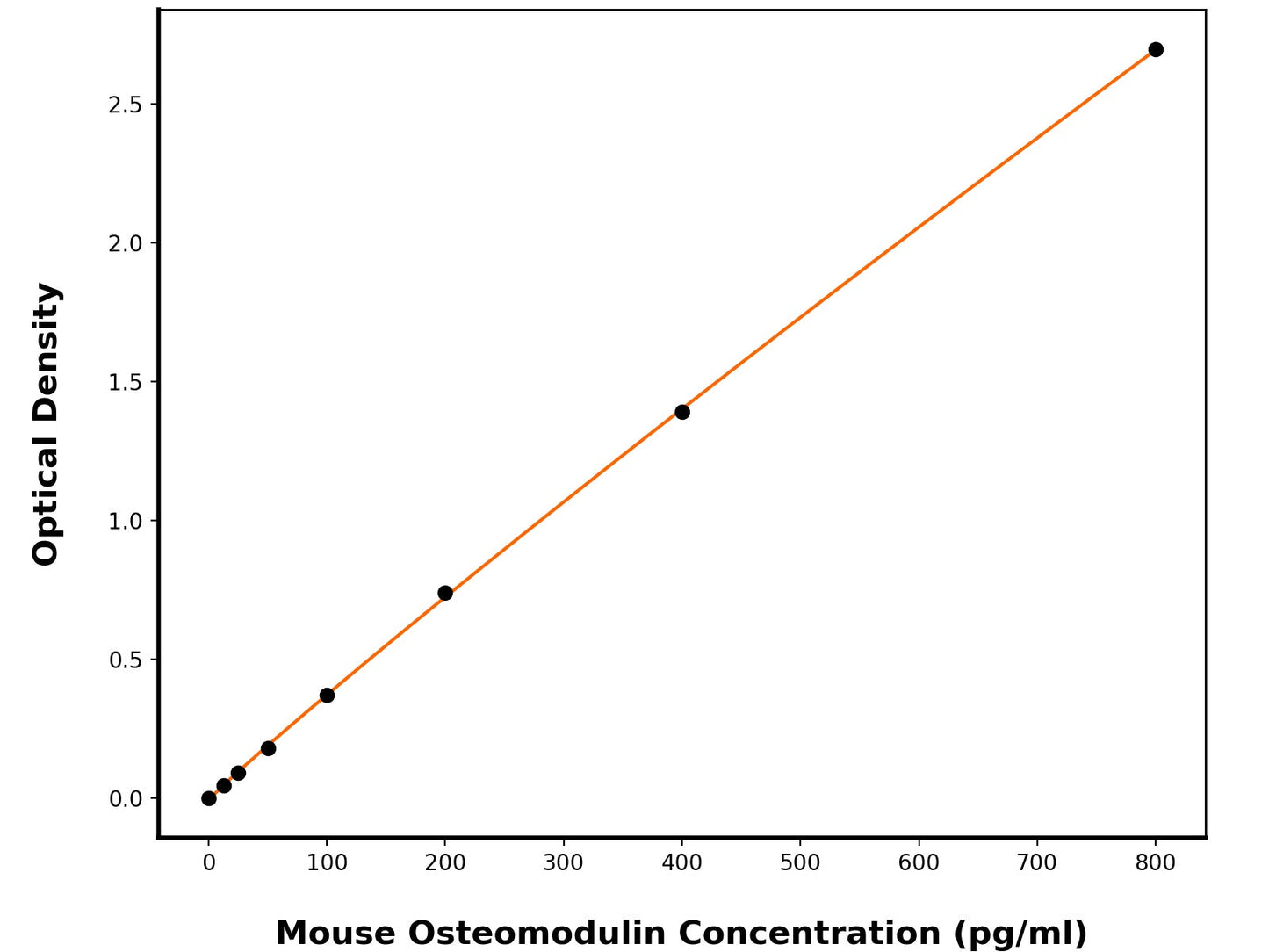1
/
of
1
Mouse Osteomodulin (OMD) ELISA Kit
Mouse Osteomodulin (OMD) ELISA Kit
This ELISA kit is designed to detect Mouse Osteomodulin (Mouse OMD). The assay plate has been pre-coated with mouse anti-Mouse Osteomodulin monoclonal antibody. When the sample containing Osteomodulin is added to the plate, it binds to the antibodies coated on the wells. Then, a horseradish peroxidase conjugated mouse anti-Mouse Osteomodulin Antibody is added to the wells and binds to Osteomodulin in the sample. After washing the wells, substrate solutions are added, and the color intensity is directly proportional to the amount of Mouse Osteomodulin present. The reaction is stopped by adding an acidic stop solution, and the absorbance is measured at 450 nm.
Catalog No:
BPE321
Regular price
$754.00 USD
Regular price
$580.00 USD
Sale price
$754.00 USD
Unit price
/
per
2 weeks
Couldn't load pickup availability
Product Details
Species Reactivity
Mouse
Sensitivity
2.68 pg/mL
Detection Range
12.5-800 pg/mL
Sample Type
Serum, plasma, cell culture supernates
Incubation(s)
3.5 hour(s)
Research Areas
Signal Transduction
Background
Osteomodulin (OMD), also known as Osteoadherin (OSAD), Keratan sulfate proteoglycan osteomodulin, KSPG osteomodulin, and SLRR2C, is a secreted protein that belongs to the small leucine-rich proteoglycan (SLRP) family and Class II subfamily. SLRP family proteins are normally found in extracellular matrices, but Osteomodulin is the only member restricted to mineralized tissues. Osteomodulin is primarily expressed by osteoblasts and might have a role in the regulation of mineralization. In bone, OSAD has been localized in the primary spongiosa within the bovine fetal rib growth plate. Moreover, in situ hybridization has shown expression of OSAD in osteoblasts close to the cartilage and bone border in the growth plate of rat femur. OSAD may play an important role during tooth development and biomineralization of dentin. Osteomodulin is a cell binding keratan sulfate proteoglycan that was recently isolated from mineralized bovine bone and subsequently cloned and sequenced. Osteomodulin may be implicated in biomineralization processes. It has a function in the binding of osteoblasts via the alpha (V) beta (3)-integrin. Osteomodulin is likely an osteoblast maturation marker that is induced by osteoclast activity. Osteomodulin is also an early marker for terminally differentiated matrix producing osteoblasts.
Shipping Condition
Shipped on cold gel packs.
Storage Condition and Shelf Life
This product can be stored at 2-8C.
Analyte
Osteomodulin
Regulatory Status
For Research Use Only

